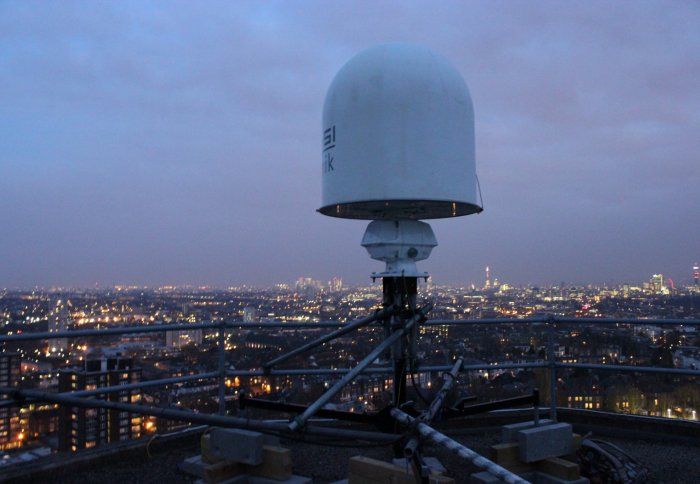X-Band Weather Radar

Urban Water Research Group of ICL improves London's flood preparedness by installing a new X-Band weather radar
The new (X-Band) radar is more sensitive than (C—Band) radars currently used by the Met Office. It can detect smaller particles, such as snow and drizzle, and can provide more accurate rainfall estimates with higher spatial and temporal resolution. It will be used for detecting drizzle during the upcoming Wimbledon Tennis Championship, as well as for improving methodologies for modelling and forecasting of urban pluvial flooding.
As part of the Interreg RainGain project (coordinated by Prof Cedo Maksimovic and Dr Christian Onof), the Urban Water Research Group of Imperial College London has installed a portable X Band RS90 “Rainscanner” weather radar, supplied by radar manufacturer Selex, on the rooftop of a high building in London for a period of 6 months from April to September 2013.
X-Band radars operate on wavelengths between 2.5 and 5 cm, which are smaller than those at which the C-Band Met Office radars operate (between 4 and 8 cm). Because of this, X?Band radars are more sensitive and can detect smaller particles, such as drizzle, snow and the tiny water particles associated to cloud development. In addition, since the radar is located within London and closer to the ground, it can provide more accurate rainfall estimates with higher spatial resolution (street level) for this urban area. This provides complementary rainfall information to the operational UK Met Office radar measurements.
The improved fine-scale rainfall estimates obtained with this radar will be useful for events such as the Wimbledon All-England Lawn Tennis Championship, for which detection of drizzle is critical. In addition, the improved rainfall estimates will allow improving the modelling and prediction of urban pluvial (surface water) flooding; this is the main purpose for which the Urban Water Research Group plans to use the data obtained with the new radar. This will enable urban water and emergency managers to adequately predict and cope with intense storms, so that the vulnerability of populations and critical infrastructure can be reduced. Research in this area at the UWRG is at the global forefront: during past 2 years this group’s members (Nuno Simoes, Li-Pen Wang and Susana Ochoa) “scored” 3 international prizes (for “hybridisation” of urban flood models, for improving the applicability of radar rainfall estimates for urban hydrology, and for improving the calibration and performance of flood models).
More information about the RainGain project can be found on: http://www.raingain.eu/en
Article text (excluding photos or graphics) © Imperial College London.
Photos and graphics subject to third party copyright used with permission or © Imperial College London.
Reporter
Angela Frederick
Department of Civil and Environmental Engineering